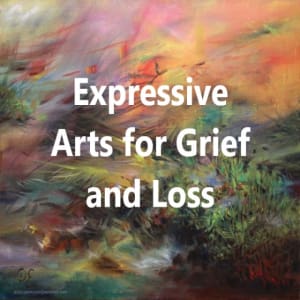
Expressive Art Interventions For Loss and Grief
$32.00
This course is no longer available
When we experience deep and tragic loss, our responses can vary significantly. Some clients have trouble accessing the words to fully describe the feelings and thoughts associated with this loss. This is where the expressive arts can help. Art is a different way to be able to relay the impact of loss and start the healing process, especially for those who are feeling “stuck.” Clinicians and clients do not need to be artists themselves to use these interventions in sessions, because it is not about the product but the act.
Upon completion of this training, participants will be able to:
- Determine how art can be helpful for clients in the grief and loss cycle
- Teach and utilize art in session to address grief
- Discuss emotional response to the art with clients
Social workers completing this course receive 2 Clinical asynchronous continuing education credits.
For other board approvals, this course qualifies for 2 hours of Clinical, Evidence Based Practices, and General Skill Building continuing education training.
Course Instructor: Stacy Blankenship, LCSW
Recording Date: 4/04/2024
Recorded Live Webinar with downloadable presentation slides and/or handouts, evaluation, and a required quiz. The learner is required to pass with a 70% or higher to achieve the CE certificate of completion. The learner is able to reset the test until a satisfactory score is achieved. CE Training Workshops, LLC, provider #1770, is approved as an ACE provider to offer social work continuing education by the Association of Social Work Boards (ASWB) Approved Continuing Education (ACE) program. Regulatory boards are the final authority on courses accepted for continuing education credit. ACE provider approval period: 8/2/2022 – 8/2/2025. CE Training Workshops, LLC has been approved by NBCC as an Approved Continuing Education Provider, ACEP No. 7091. Programs that do not qualify for NBCC credit are clearly identified. CE Training Workshops, LLC is solely responsible for all aspects of the programs. System Requirements: Firefox, Chrome, Brave, Safari, Edge on any modern operating system (Windows, MacOS, Linux, Android, iOS). A desktop browser is recommended. We do not provide support resources for issues encountered using a mobile device. For more information about our policies and board approval statements, please visit our FAQS page.
Stacy Blankenship, LCSW is a Licensed Clinical Social Worker and an intensively trained in Dialectical Behavioral Therapist completing her training at The Linehan Institute in 2015.
Expressive Art Interventions for Loss and Grief (2 HR) Syllabus
I. Understanding Grief and Its Expressions
- Define grief as an emotional, psychological, physical, and spiritual process
- Explore types of grief including uncomplicated, collective, complicated, anticipatory, disenfranchised, and ambiguous
- Identify symptoms and stages of grief and their impact on daily life
- Discuss internal processing and cultural factors influencing grief expression
II. Art as a Therapeutic Tool for Grief
- Use art as a non-verbal medium for emotional release and self-expression
- Describe the art therapy process including directives, shared creation, and reflection
- Facilitate emotional expression, mindfulness, catharsis, and communication through art
III. Benefits and Rationale for Using Art Therapy
- Support emotional expression and regulation through creative engagement
- Enhance coping skills and provide a constructive outlet for pain
- Promote meaning-making and memory honoring through symbolic art
- Improve self-awareness, self-esteem, and behavioral insight
- Foster a sense of control and personal empowerment during grief
IV. Core Art Therapy Activities for Grief
- Letting Go Jars: represent release and radical acceptance
- Memory Tree/Tree of Life: honor loved ones and process missed opportunities
- Flower Creation: transform written memories or messages into symbolic forms
- Memory Boxes and Assemblage Art: preserve emotional artifacts and meaningful tokens
V. Mindfulness and Relaxation Through Art
- Mandala drawing, mindful doodling, watercolor washes, and breathwork art
- Nature art and guided imagery art for grounding and sensory connection
- Encourage meditative focus through Zentangle and texture exploration
- Integrate breath with brush strokes or drawing for calming the nervous system
VI. Processing and Reflection in Art Therapy
- Guide clients through reflective questions after sessions
- Explore emotions, insights, challenges, and symbolic representations in artwork
- Use artwork as a springboard for discussion, insight, and therapeutic progress
- Encourage future focus and integration of healing into daily life


